Ahoy, squirts! Quint here with a little chat I did with Ms. Thelma Schoonmaker. While she's most famous within movie fan circles as being the brilliant editor who cuts all of Martin Scorsese's films, Ms. Schoonmaker is also a passionate film advocate and has spent a great deal of time restoring classics alongside Scorsese.
In particular they have focused on the films of Michael Powell and Emeric Pressburger. Marty may be one of The Archers' biggest fans, but Thelma took it one step further and actually married one of them! Sadly, Michael Powell passed away in 1990, but Schoonmaker has made sure his legacy lives on in his films.
She and Scorsese have helped restore Powell/Pressburger films The Life and Death of Colonel Blimp, The Red Shoes, A Matter of Life and Death, Age of Consent and now they've taken aim at The Tales of Hoffmann, a crazy fantasy opera where every scene explodes with Technicolor insanity.
The 4k restoration, from the original three-strip Technicolor camera negative, will be playing in New York and LA very soon. Schoonmaker is in Taiwan at the moment working with Scorsese on his next film, SILENCE, but will be Skyping in for a Q&A at the Film Forum in New York before the 7:00pm show on Friday, March 13th. George Romero will be introducing the restoration the next evening, March 14th.
LA shouldn't feel left out. Ms. Schoonmaker will Skype in for a Q&A at the Cinefamily Saturday, March 14th.
I was able to get her on the phone to discuss the work of her late husband as well as the process of restoration. She was a wonderful talker and I pushed the interview as long as I possibly could. I hope you guys enjoy the chat.
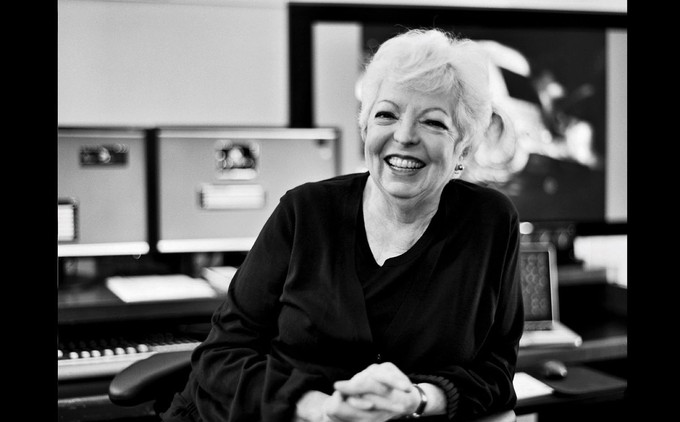
Thelma Schoonmaker: Hello, this is Thelma.
Quint: Hi, Thelma. This is Eric Vespe from Ain't It Cool News. How's it going?
Thelma Schoonmaker: Hi, how are you?
Quint: Very well. Thank you so much for taking the time to speak with me today. I'm a big fan of your work with Marty Scorsese as well as a big fan of Michael's movies, too, so it's kind of a perfect scenario to get to talk with you.
Thelma Schoonmaker: Thank you! That's wonderful.
Quint: The Powell & Pressburger movie I saw first was The Red Shoes. I loved it and it got me searching out the rest of their stuff and while I still think it's an incredible film the one that sticks with me the most, the one I have to watch at least once a year, is A Matter of Life and Death.
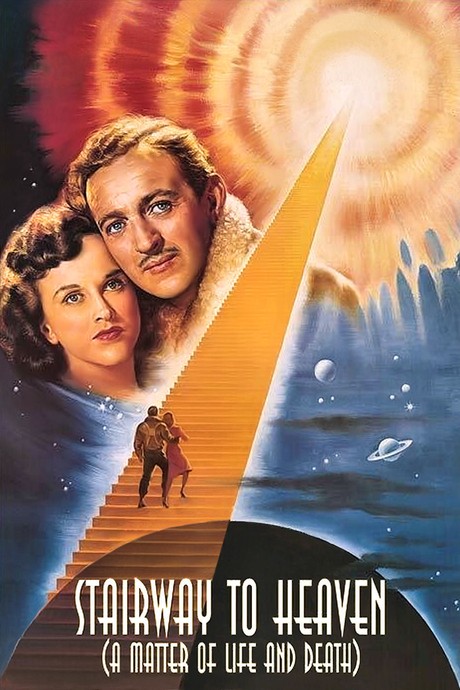
Thelma Schoonmaker: Oh, yes.
Quint: I foolishly didn't look it up before talking with you, but I assume it was you and Marty that were responsible on the last restoration of that film a few years ago.
Thelma Schoonmaker: Yes, and Grover Crisp at Sony was wonderful about helping us do that and also restore Age of Consent and help put that film back together. Age of Consent was a film Michael made in Australia and had been re-edited by the studio in America. He put that back together as well and put them both out on DVD in America.
Quint: I watched them both because of that set. I had heard of both films, obviously, but had never gotten a chance to see them until that set was put together. Films like to hide from us sometimes, so it's great that you guys keep going strong with these restorations. Without that effort from you guys I know I probably never would have come across either film and I'm as big of a movie buff as you can get.
Thelma Schoonmaker: I know. Scorsese has been so passionate and devoted to the whole canon of their work from the time they were so little. The fact that he has been able to raise the substantial amounts of money needed for these color three-strip restorations, like Hoffman, is phenomenal. Not many archives can raise that amount and he does it through the Film Foundation, which is run by Margaret Bodde and Jennifer Ahn. We wouldn't be able to do these films otherwise.
Quint: I'm glad you guys are doing it. I haven't been able to see the new restored version of The Tales of Hoffman yet, but even just rewatching it on an old standard def DVD the visuals popped. There's nothing like the way Powell and Pressburger used Technicolor. I recently rewatched the Criterion Blu-Ray of The Life and Death of Colonel Blimp and I was floored by just how amazing that looked. I don't know what it is about me, but some part of my brain always forgets just how beautiful that old Technicolor process is and I'm always amazed when I see it presented well.
Thelma Schoonmaker: I know. Exactly. It takes a lot of time to get that color right because when you start way back with the original camera negatives... a lot of the restorations before were made from interpositives, which is a later stage and is removed by several generations from the original camera negative. What we were able to do with Colonel Blimp and The Red Shoes and Tales of Hoffmann because of the money Marty could raise was go back to the original camera negatives. Then we had to rebuild the color because there's no information on that original negative about how to time it.
But because we know the films so well and I looked at it so much with my husband, both Marty and I know what it's supposed to look like and with the great help of MPI, the people at Warner Bros who always do these wonderful restorations, that's Ned Price and Ray Grabowski, we've done all three, working hand-in-hand. It takes a long time, but it's very much worth it. Wait until you see the restoration of Hoffmann! The color is even more vibrant.
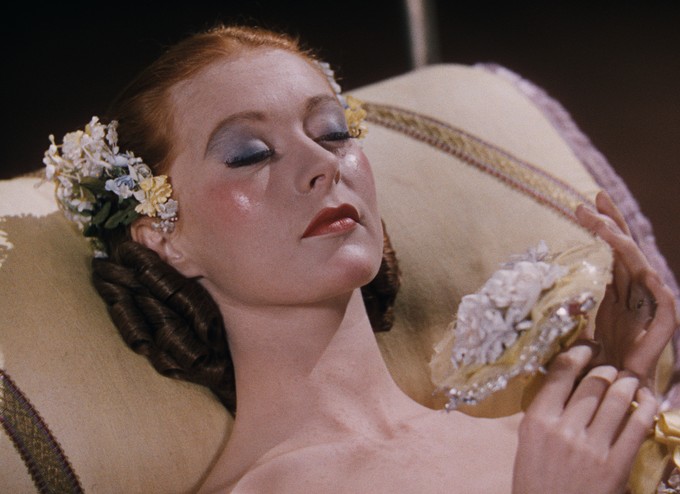
Quint: I can't even imagine. Like I said earlier, I just watched it in 480p and it impressed me. The 4k restoration is going to blow my mind! Now, you're setting up screenings of the 4k DCP, yeah?
Thelma Schoonmaker: That's right, yeah. It's amazing. There's so much detail that has come out now because sometimes there was misregistration as the three strips that were originally in the camera aged differently. Sometimes they'd shrink a little bit and one would shrink a little bit more than another and that's why you'd get the misregistration you'd sometimes see even when the prints were first made. Digitally, with computers, you can pull them in exactly in registration, so it's so vivid.
When Scorsese showed this film to his fourteen year old daughter she said to him, “Did you see that Robert Helpmann is wearing a scorpion pin at his neck? That's the kind of detail none of us has been able to see before. Scorsese couldn't get over all the things he hadn't seen before and he's watched this movie I can't tell you how many times!
Quint: I know you were married to Michael Powell and must have a close appreciation and understanding of his work, but I imagine that when you're working so in-depth on a restoration like this or Blimp or Red Shoes you're finding details you've never seen. Not just in clarity, but in technique, editing choices, staging, production design, etc.
Thelma Schoonmaker: Even with Blimp... Marty and I could watch that movie a hundred times and never get tired of it, but when working on that I kept seeing little details I'd never seen. Their films are so layered and they do it so subtly that it has an effect on you, but don't quite understand how much work went into that. I kept seeing little things every time I saw Blimp, but it was just amazing the things I was seeing in Hoffmann. Incredible details that Hein Heckroth, the wonderful designer, was pumping into the movie. I don't know how he had time to do what he did.
I was constantly discovering things because you have to go back and forth and back and forth... is the color right here? Is the yellow right here? Is the blue right here? You see the film over and over again and every time I saw something else again. The first time I saw the scorpion pin I couldn't believe it!
Quint: I bet. Even though Blimp is an epic story it is still set in a recognizable reality. The Tales of Hoffmann, however, is set in a highly theatrical fantasy world and since you get different stories each vignette has a different style. There's so much more detail in everything. It's almost overwhelming how much is visually going on in every shot of that movie.
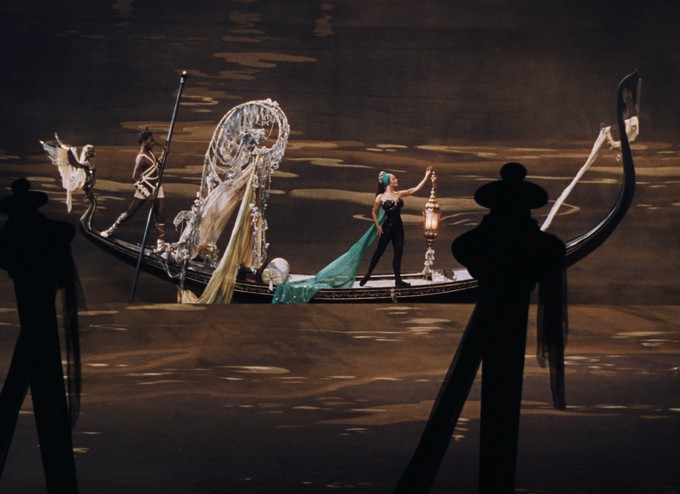
Thelma Schoonmaker: Yeah, it was like they were on LSD or something. (laughs) Hein Heckroth's imagination just ran wild. He and Michael just worked so wonderfully together. They loved each other. He rose to Michael and Emeric's challenges, happily. Michael would say, “Where is something we need here?” and Hein would say, “Ah! Wait a minute, okay... I just did this set over here, so shoot here first and I'll fix this one.”
It was such an exciting time for them, too, because they felt like they were shooting a silent film since they were shooting to playback of the wonderful score recorded by Sir Thomas Beecham. They could just do anything. They freed up the Technicolor camera from its huge blimp. It was so big, the blimp that could disguise the sound of those three strips going through the camera, that they called it the Enchanted Cottage. It was so big! They could take the blimp off and free up the camera and, as Scorsese says, it just flies through the movie. It dances through the movie.
A particularly gutsy thing they did, I think, was using dancers for some of the parts instead of the opera singers. We'd hear their voices, but use visuals to convey the emotion of the film. That was such a daring choice. Can you imagine? If they had asked opera goers at the time they would have said, “You can't do that!” But when they see Hoffmann they love it because of the dramatic gestures that dancers know how to do so well. That's their job on stage. Their body language add so much to the film.
Scorsese studied it obsessively. I think you may know that the eyes of Robert Helpmann were the inspiration for De Niro's eyes in Taxi Driver in the mirror in the cab when he's looking at Marty in the backseat. That's all inspired by Helpmann's exaggerated eyes.
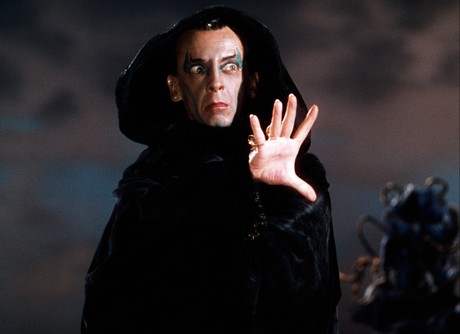
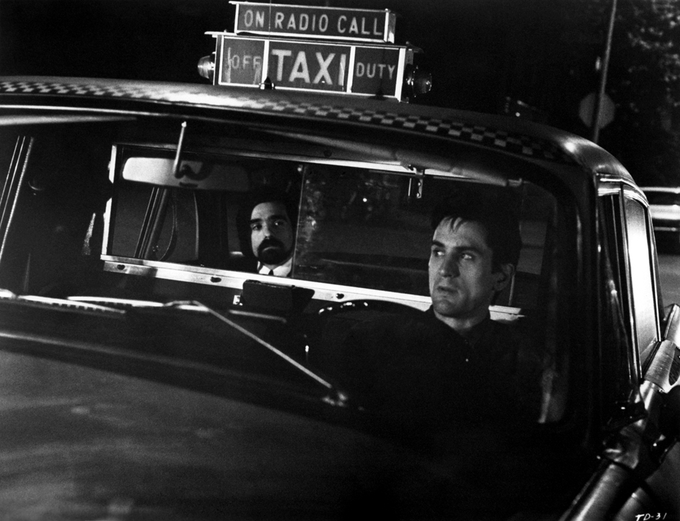
By the way, when you see the restoration, at the end of it they found something nobody's ever seen before. They had decided to try to introduce the singers who had done the voices of the dancers. This thing came up at the end of the negative and I said, “What is that?” They said, “We don't have any sound for this, but the British Film Institute found it.” It's so marvelous. If you go see it at the Film Forum you'll see it.
That's a new addition as well as 6 minutes that we put into the third act where the father gets very angry with Antonia because he's afraid she's going to sing, and therefor die. That anger really helps the third act. They were forced to cut it, but we found that as well and we put it back. It's really wonderful we were able to do that.
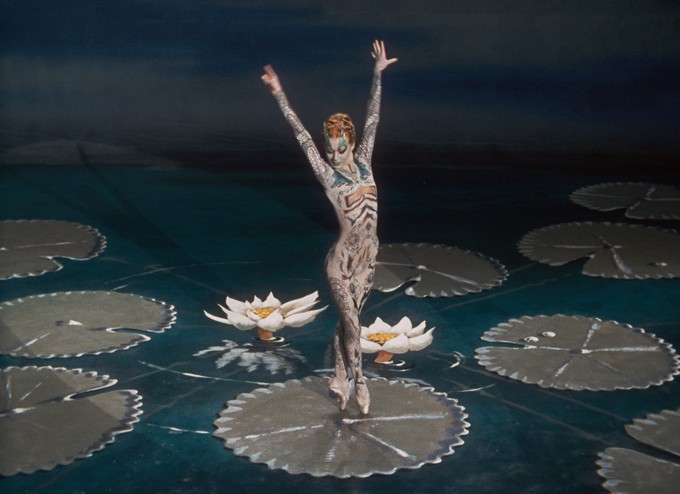
Quint: It's a testament to how amazing their films are that even though I just watched Tales of Hoffmann last night, just listening to you describe that stuff... if I had the restoration in front of me I'd throw it on as soon as we finish talking. There's something intoxicating about their work. As I've slowly been discovering the films of Hollywood's early years there's only been a few filmmakers who have made that lightbulb go off in my brain that made me hungry for every one of their films. Preston Sturges was one and Powell and Pressburger's films was another.
Thelma Schoonmaker: That's wonderful that you've been able to go back and discover some of these great masterpieces because so many people today still don't even know about them. They're so unusual, so unexpected. You never know what you're going to see when you watch a Powell/Pressburger film and that drove the critics crazy because that made them harder to review! (laughs)
But they're so packed with emotion, which is quite unusual for British films, but they're never sentimental and they're never cliched and there's never really a hero or a villain, there's only people in-between, which is like most of us are... Except for Helpmann in Hoffmann, where he really is the villain. But these films resonate. They live.
After WW2 their films were sort of thrown out with the bathwater when the Labor government came in, which brought wonderful things to England, but the Kitchen Sink School came in. This Sporting Life is probably the best of them, but they're not lasting. They're not holding up as well as these movies, which is so interesting. Maybe because they're so specific to a time and a particular social problem and as that social problem goes away they're not as powerful anymore. The Powell/Pressburger films were about people everywhere. They're about humanity and that's what makes them live, I think. The quirks and the things you don't expect to see onscreen is what makes them live because we recognize that. It rings a bell.
Quint: I think you're right and it really touches something in people who connect with their movies. When you meet another Powell and Pressburger fan there's this instant kinship, almost. It's like “You and I are instantly friends! Obviously you have good taste!”
Thelma Schoonmaker: That's very beautifully described. That's really true.
Quint: I'll wrap up by once again thanking you for advocating so much for these movies. I've been thinking that one of the keys to getting younger film fans turned on to these movies is through the work you and Marty do. There are fingerprints of Powell and Pressburger all over your collaborations with Scorsese, like the famous scene in Raging Bull where you don't show the fight, which is directly inspired by a like moment in Colonel Blimp. Little things like that open doors to hungry film fans.
Thelma Schoonmaker: Well, thank you for what you're doing to encourage that. We're desperately trying to get people who won't look at black and white films... I mean, that's 85 years of masterpieces they're ignoring. Scorsese ever since I've ever known him has done nothing but try to prosthelytize for the Powell and Pressburger movies and many, many others as well, but his particular passion is Powell and Pressburger. He says their films are in his DNA, that's how much he lives with them. He lives with them every day. He really does. And I do, too, now and that's a great legacy my husband left me.
Quint: I'm glad you guys are fighting the good fight and I hope you guys have the stamina to keep them coming. I really want a Blu-Ray of A Matter of Life and Death, so you need to go make that happen for me. Just for me, nobody else. I'll be fine with that.
Thelma Schoonmaker: We're actually working on it and trying to raise the money for it. I'm very hopeful. By the way, George Romero, the other person who is sort of besotted with this movie, will be introducing it at the Film Forum on the 14th. Are you in LA or New York?
Quint: I'm actually smack dab in-between both place. I'm in Austin, TX.
Thelma Schoonmaker: Oh, you're in Austin, TX! That's too bad. Maybe it'll come there, I hope!
Quint: Yeah, I won't be able to be at either of the big Tales of Hoffmann screenings coming, but I can hopefully at least point some fellow LA and NY cinephiles at them. Romero's going to present the movie in New York?
Thelma Schoonmaker: He's going to introduce. I'm going to introduce via a Skype from Taiwan on the 13th when it opens at the Film Forum and also I'm going to do a Skype at the Cinefamily in LA. But George is actually going to be there in NY on the 14th. He's insanely in love with this film and I'm so thrilled that he's going to be there. Of course, Scorsese would love to be there, but he can't. He's so busy working on the film we're shooting now.
Quint: Speaking of, I'll let you get back to work. Thank you for you time.
Thelma Schoonmaker: You're wonderful. Thank you so much.
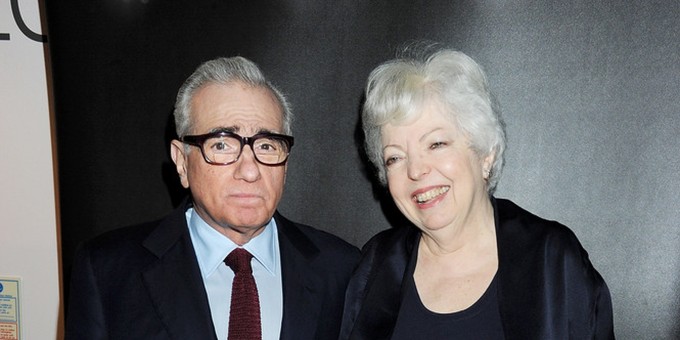
There you have it. A big thank you to Thelma for taking time out to chat with another movie nerd. I'm super jealous of all you guys who get to see this restoration on the big screen!
-Eric Vespe
”Quint”
quint@aintitcool.com
Follow Me On Twitter

